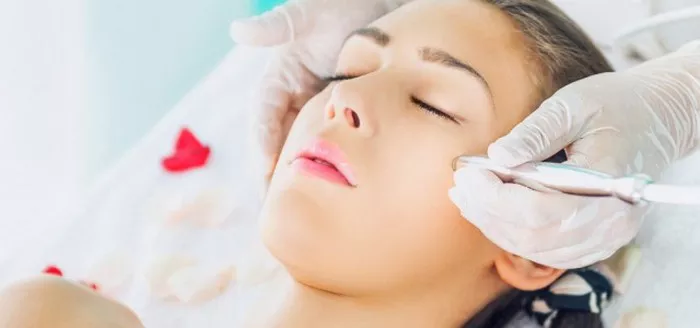Blackheads, those pesky, dark spots that often appear on our skin, can be a source of frustration and self-consciousness for many. While there are numerous products and techniques available to combat blackheads, one skincare procedure that has gained popularity in recent years is microdermabrasion. This non-invasive treatment offers the promise of smoother, clearer skin. But what effect does microdermabrasion have on blackheads? In this comprehensive guide, we will delve into the world of blackheads, explore the principles of microdermabrasion, and discuss how this procedure can help tackle this common skincare concern.
Understanding Blackheads
Before we explore the impact of microdermabrasion, it’s crucial to understand what blackheads are and why they occur:
Formation: Blackheads, medically known as open comedones, are a type of acne lesion. They form when hair follicles become clogged with excess sebum (skin oil) and dead skin cells. Unlike whiteheads (closed comedones), blackheads remain open to the skin’s surface.
Appearance: Blackheads get their name from their dark or black appearance. This discoloration is not due to dirt but rather the result of oxidized melanin, the pigment in our skin.
Common Locations: Blackheads can appear on various parts of the body but are most commonly found on the face, especially in the T-zone (forehead, nose, and chin).
Factors Contributing to Blackheads: Several factors contribute to the development of blackheads, including hormonal fluctuations, excess oil production, poor skincare habits, and even genetics.
The Role of Microdermabrasion
Microdermabrasion is a non-surgical cosmetic procedure that exfoliates and rejuvenates the skin’s outermost layer. It involves the use of a device that sprays tiny, abrasive crystals onto the skin’s surface and simultaneously vacuums them away, along with dead skin cells and impurities. The key principles of microdermabrasion include:
Exfoliation: Microdermabrasion gently exfoliates the skin, removing dead skin cells that can clog pores and contribute to the formation of blackheads.
Stimulation of Collagen Production: The exfoliation process can stimulate collagen production, which helps improve skin elasticity and texture.
Enhanced Product Absorption: By removing the outer layer of skin, microdermabrasion allows skincare products to penetrate more effectively, enhancing their benefits.
Microdermabrasion and Blackheads
Now, let’s explore how microdermabrasion specifically affects blackheads:
Extraction of Blackheads: During a microdermabrasion session, the abrasive crystals and vacuum mechanism help extract impurities from the skin, including blackheads. The gentle exfoliation process can dislodge blackheads, making them easier to remove.
Unclogging Pores: Microdermabrasion can help unclog pores by removing dead skin cells and excess oil. By reducing the factors that contribute to blackhead formation, it can be an effective preventive measure.
Improved Skin Texture: Microdermabrasion leaves the skin smoother and more refined. As a result, the appearance of blackheads may be less noticeable after treatment.
Enhanced Penetration of Skincare Products: Following a microdermabrasion session, skincare products like cleansers, serums, and moisturizers can penetrate more deeply into the skin. This can aid in maintaining clear, blackhead-free skin.
It’s important to note that while microdermabrasion can be effective in addressing blackheads, it may not provide instant or permanent results. Multiple sessions may be required to achieve the desired outcome, and ongoing skincare maintenance is essential.
Post-Microdermabrasion Skincare Tips
To maximize the benefits of microdermabrasion in the fight against blackheads, consider the following post-treatment skincare tips:
Keep Skin Clean: Maintain a regular skincare routine that includes gentle cleansing to prevent the buildup of oil and debris.
Use Non-Comedogenic Products: Choose skincare and makeup products labeled as non-comedogenic, which are less likely to clog pores and contribute to blackheads.
Regular Exfoliation: Continue to exfoliate your skin regularly, but avoid overdoing it, as excessive exfoliation can lead to irritation.
Sun Protection: Apply sunscreen daily to protect your skin from UV damage, which can worsen the appearance of blackheads.
Follow Professional Advice: Consult with a skincare professional for personalized recommendations and guidance on how to address your specific blackhead concerns.
Conclusion
Microdermabrasion is a valuable tool in the battle against blackheads. By promoting exfoliation, unclogging pores, and enhancing overall skin health, this non-invasive procedure can help improve the appearance of blackhead-prone skin. However, it’s important to approach microdermabrasion as part of a comprehensive skincare regimen that includes proper cleansing, sun protection, and ongoing maintenance. For the best results, consult with a qualified skincare professional who can assess your individual needs and create a tailored plan to keep blackheads at bay and achieve clear, radiant skin.


